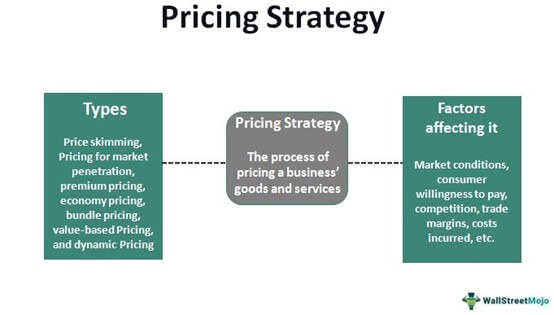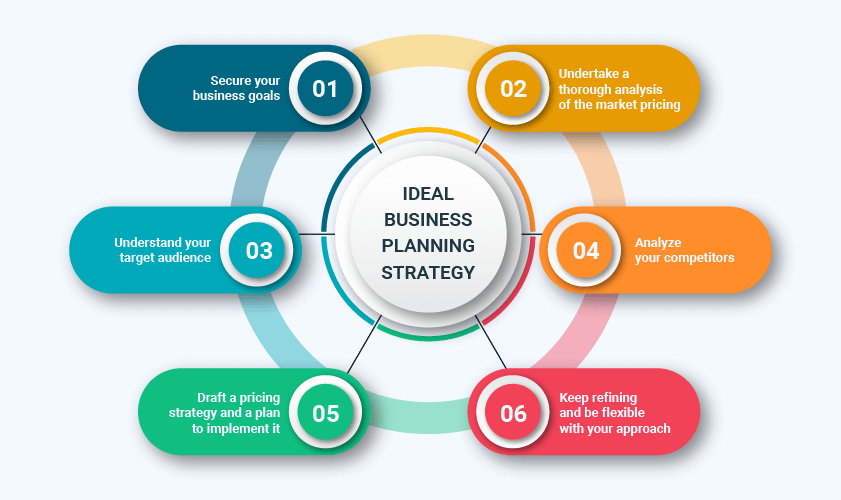The Link In Between Brand Positioning and Your Pricing Strategy
The Link In Between Brand Positioning and Your Pricing Strategy
Blog Article
Optimize Revenue With Proven Pricing Approach Methods
Techniques such as value-based pricing, dynamic rates, and thorough market analysis can dramatically enhance a company's economic performance. Comprehending customer assumption and leveraging data analytics for dexterous prices adjustments are crucial components of this approach.
Recognizing Consumer Assumption
Comprehending customer understanding is critical for establishing efficient prices approaches. It influences exactly how consumers evaluate a product's worth, top quality, and overall beauty. Services have to recognize that customers often base their readiness to pay not entirely on the item's inherent qualities but also on psychological variables, including brand name credibility, social standing, and viewed shortage.
Furthermore, companies need to take into consideration the duty of pricing psychology, such as charm prices or rate anchoring, which can considerably impact customer behavior. Recognizing these perceptions allows companies to mount their prices approaches in a manner that lines up with customer expectations while taking full advantage of success.
Including customer perception into pricing strategies not only aids in establishing affordable costs but likewise cultivates brand name loyalty, as consumers feel recognized and valued. Ultimately, a nuanced understanding of client assumption can cause sustainable income growth and enhanced market positioning.
Studying Market Trends
To establish a reliable pricing method, examining market patterns is essential for organizations wanting to stay affordable. Recognizing the dynamics of market changes enables business to make educated choices regarding prices adjustments, item launches, and resource allowance - Pricing Strategy. By checking consumer behavior, financial indications, and sector growths, businesses can determine patterns that notify their pricing structures
Seasonal fads can provide insights right into optimal rates throughout peak and off-peak periods, allowing for tactical discounting or marketing rates. In addition, maintaining an eye on technological innovations can assist identify prospective dangers or possibilities that could affect pricing methods.
Making use of information analytics tools can improve the accuracy of pattern evaluation, giving important understandings that help with active decision-making. Business must also consider carrying out routine market research to validate presumptions and adapt to progressing consumer preferences. By leveraging these insights, services can not just maximize their pricing approaches yet additionally strengthen their general market setting, making sure long-term earnings and development.
Affordable Pricing Strategies
An affordable rates approach is essential for services intending to gain an edge in a jampacked industry. By evaluating competitors' rates frameworks and market positioning, business can tactically establish their rates to draw in customers while maintaining success. This approach calls for a complete understanding of both the affordable landscape and consumer understandings of value.
One efficient approach is rate matching, where a company provides to defeat a rival or match's cost. This technique can enhance customer loyalty and encourage sales, specifically in price-sensitive markets. Furthermore, penetration rates can be used to record market share by initially establishing costs lower than competitors, luring clients to try the item and fostering brand understanding.
Additionally, businesses can apply emotional prices methods, such as prices items just below a round number (e.g., $9.99 instead of $10 - Pricing Strategy.00) This can produce the assumption of a far better bargain, influencing consumer actions
Inevitably, a successful affordable prices technique balances the need to stay appealing to consumers while making sure that the pricing version straightens with the business's general objectives. Frequently readjusting and examining rates in feedback to market changes and rival activities is important for sustained success.
Value-Based Prices Techniques
Value-based rates techniques concentrate on setting rates primarily based on the perceived value of a services or product to the consumer, as opposed to only on manufacturing expenses or rival prices. This strategy calls for a deep understanding of client demands, choices, and the unique benefits that the service or product deals. By identifying the particular value chauffeurs that resonate with customers, organizations can create prices strategies that mirror real worth of their offerings.
To apply value-based pricing efficiently, companies have to take part in detailed marketing research, including consumer surveys and focus teams, to collect understandings into consumer perceptions. Additionally, organizations must section their consumer base to tailor rates approaches that straighten with various value assumptions across next segments.
Interaction plays a vital duty in value-based rates; business have to express the unique worth proposition clearly to validate the rate factor. Ongoing analysis and change are necessary, as consumer assumptions of value may move over time due to market characteristics or competitive actions. By focusing on worth in pricing methods, organizations can improve customer fulfillment, enhance find out commitment, and eventually enhance revenue.
Dynamic Prices Versions

Dynamic prices leverages advanced formulas and data analytics to monitor competitor prices, customer habits, and stock levels. By dynamically readjusting rates, businesses can optimize profits, maximize earnings margins, and respond promptly to changes in the market. Airline companies typically use this design to adjust ticket prices based on variables like continuing to be seats, time till separation, and rival pricing.
Nonetheless, the implementation of dynamic rates have to be approached with care. Transparent interaction with customers is vital to preserve trust fund and stay clear of assumptions of unfair rates methods. Additionally, companies ought to guarantee that their rates formulas are not excessively complicated or opaque, as this can cause consumer discontentment.
Eventually, when performed thoughtfully, dynamic prices versions can offer businesses with a considerable competitive advantage, enabling them to take advantage of market opportunities while dealing with client assumptions in a rapidly altering economic landscape.
Conclusion

Methods such as value-based pricing, dynamic rates, and extensive market analysis can considerably boost a firm's monetary performance. Seasonal trends can provide insights right into optimal rates throughout optimal and off-peak durations, enabling for strategic discounting or promotional pricing.Dynamic rates leverages advanced formulas and data analytics to keep an eye on competitor rates, customer behavior, and supply levels. By recognizing client understanding, analyzing market patterns, and using competitive prices methods, businesses can efficiently straighten their pricing with consumer expectations. Additionally, value-based prices and dynamic pricing versions make it possible for organizations to react agilely to market changes.
Report this page